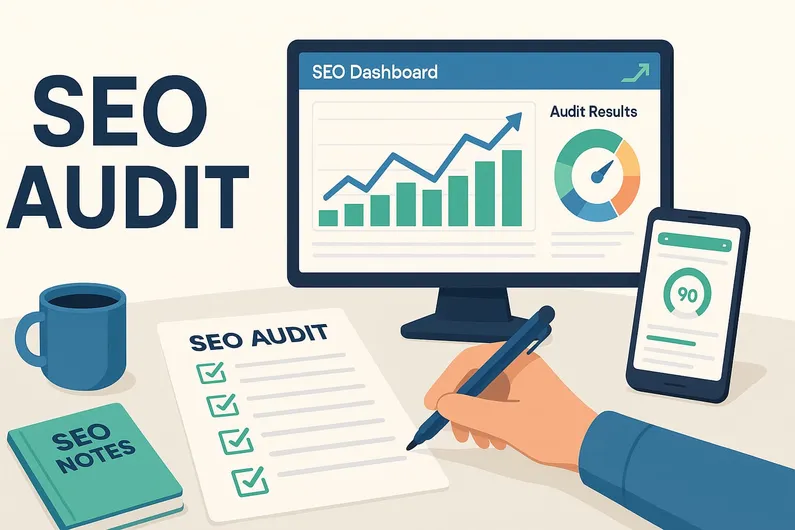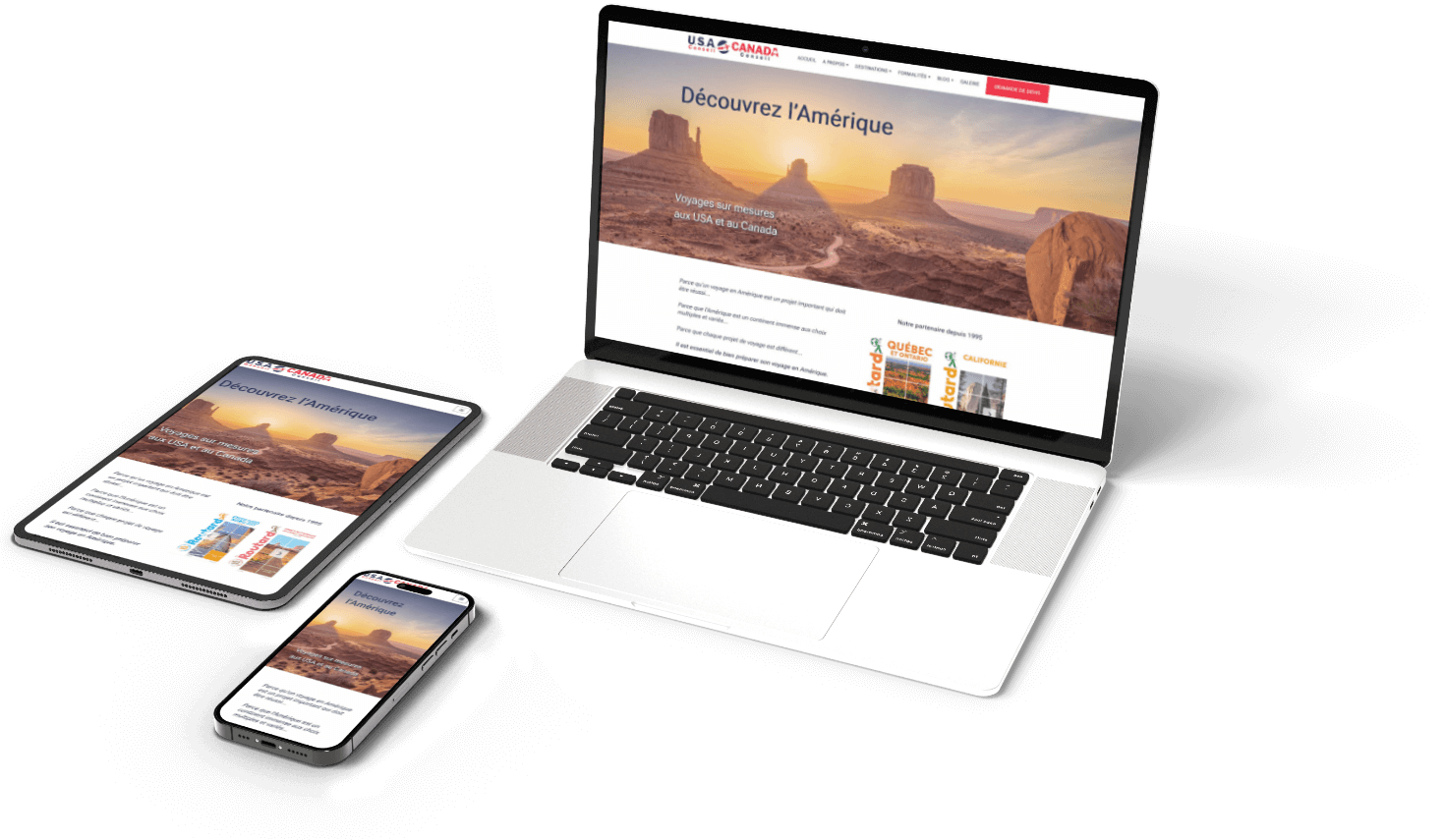
SEO Audit Guide 2026 | Boost Rankings in 30 Days
An SEO audit is like a health checkup for your website—it identifies what’s working, what’s broken, and what needs improvement to boost your search rankings. In 2026, with Google’s ever-evolving algorithms and increasing competition, regular SEO audits are more critical than ever.
This comprehensive guide walks you through conducting a complete SEO audit that can boost your rankings in just 30 days. For hands-on help, explore our SEO services.
What is an SEO Audit?
An SEO audit is a systematic analysis of your website’s search engine optimization health. It examines:
- Technical SEO (site structure, speed, mobile-friendliness)
- On-page SEO (content, keywords, meta tags)
- Off-page SEO (backlinks, local citations)
- User experience (navigation, usability, accessibility)
Why SEO Audits Matter in 2026
Google’s Evolving Algorithms
- Core Web Vitals are now ranking factors
- Mobile-first indexing is fully implemented
- Page Experience signals impact rankings
- E-A-T (Expertise, Authoritativeness, Trustworthiness) is crucial
Competitive Landscape
- More businesses competing online
- Higher quality standards required
- Faster user expectations for performance
- Voice search changing search behavior
Pre-Audit Preparation
1. Gather Your Tools
Free Tools:
- Google Search Console
- Google PageSpeed Insights
- Google Mobile-Friendly Test
- Screaming Frog (free version)
- GTmetrix
Paid Tools (Optional):
- Ahrefs or SEMrush
- Screaming Frog Pro
- DeepCrawl
- Botify
2. Set Up Tracking
- Google Analytics 4 for traffic data
- Google Search Console for search performance
- PageSpeed Insights for performance monitoring
- Core Web Vitals tracking
3. Define Your Goals
- Target keywords you want to rank for
- Competitor websites to benchmark against
- Traffic goals and conversion targets
- Timeline for improvements
Phase 1: Technical SEO Audit (Days 1-7)
1. Site Structure Analysis
Check for:
- URL structure (clean, descriptive URLs)
- Internal linking (proper hierarchy)
- Site architecture (logical page organization)
- XML sitemap (present and updated)
Tools to Use:
- Screaming Frog for site crawling
- Google Search Console for sitemap status
- Manual review of URL structure
Common Issues:
- Deep page hierarchy (too many clicks to reach content)
- Inconsistent URL patterns
- Missing or broken internal links
- Outdated sitemaps
2. Mobile Optimization Audit
Check for:
- Mobile-friendliness using Google’s Mobile-Friendly Test
- Responsive design across devices
- Touch-friendly navigation and buttons
- Mobile page speed optimization
Key Metrics:
- Mobile usability score
- Page load speed on mobile
- Touch target sizes (minimum 44px)
- Text readability on small screens
3. Page Speed Analysis
Check for:
- Core Web Vitals scores
- Page load times across devices
- Image optimization and compression
- JavaScript and CSS minification
Tools to Use:
- Google PageSpeed Insights
- GTmetrix
- WebPageTest
- Chrome DevTools
Critical Metrics:
- LCP (Largest Contentful Paint): Under 2.5 seconds
- FID (First Input Delay): Under 100 milliseconds
- CLS (Cumulative Layout Shift): Under 0.1
4. Crawlability and Indexing
Check for:
- Robots.txt file configuration
- Meta robots tags
- Canonical tags for duplicate content
- 404 errors and broken links
Tools to Use:
- Screaming Frog
- Google Search Console
- Manual testing
Phase 2: On-Page SEO Audit (Days 8-14)
1. Content Analysis
Check for:
- Keyword optimization (target keywords in content)
- Content quality and depth
- Duplicate content issues
- Content freshness and updates
Key Elements:
- Title tags (unique, descriptive, under 60 characters)
- Meta descriptions (compelling, under 160 characters)
- Header tags (H1, H2, H3 structure)
- Image alt text (descriptive, keyword-rich)
2. Keyword Research and Optimization
Analyze:
- Current keyword rankings for target terms
- Keyword density and distribution
- Long-tail keyword opportunities
- Competitor keyword strategies
Tools to Use:
- Google Keyword Planner
- Ahrefs or SEMrush
- Google Search Console
- Answer The Public
3. Internal Linking Audit
Check for:
- Link structure and hierarchy
- Anchor text optimization
- Broken internal links
- Link equity distribution
Best Practices:
- Use descriptive anchor text
- Link to relevant, high-quality pages
- Maintain logical link structure
- Fix broken links immediately
Phase 3: Off-Page SEO Audit (Days 15-21)
1. Backlink Analysis
Check for:
- Backlink quantity and quality
- Link diversity across domains
- Toxic links that need disavowing
- Link building opportunities
Tools to Use:
- Google Search Console
- Ahrefs or SEMrush
- Majestic
- Link Research Tools
Key Metrics:
- Total number of backlinks
- Referring domains
- Domain Authority (DA)
- Link velocity and growth
2. Local SEO Audit (if applicable)
Check for:
- Google My Business optimization
- Local citations and directory listings
- NAP consistency (Name, Address, Phone)
- Local content and reviews
Tools to Use:
- Google My Business
- BrightLocal
- Whitespark
- Manual directory checks
3. Social Media Integration
Check for:
- Social media presence and activity
- Social sharing buttons and optimization
- Social proof and engagement
- Social media SEO opportunities
Phase 4: User Experience Audit (Days 22-28)
1. Navigation and Usability
Check for:
- Site navigation clarity and logic
- Search functionality (if applicable)
- Breadcrumb implementation
- User journey optimization
Testing Methods:
- User testing sessions
- Heat mapping tools (Hotjar, Crazy Egg)
- Analytics behavior flow
- Manual navigation testing
2. Content Quality and Engagement
Check for:
- Content readability and structure
- User engagement metrics
- Bounce rate and time on page
- Conversion optimization
Key Metrics:
- Average time on page
- Bounce rate
- Pages per session
- Conversion rate
3. Accessibility Audit
Check for:
- WCAG compliance (Web Content Accessibility Guidelines)
- Alt text for images
- Color contrast ratios
- Keyboard navigation functionality
Tools to Use:
- WAVE (Web Accessibility Evaluation Tool)
- axe DevTools
- Lighthouse accessibility audit
- Manual testing
Phase 5: Competitive Analysis (Days 29-30)
1. Competitor Benchmarking
Analyze:
- Top competitors in your industry
- Their keyword strategies and rankings
- Content gaps and opportunities
- Technical SEO differences
Tools to Use:
- Ahrefs or SEMrush
- Google Search Console
- Manual competitor analysis
- Social media monitoring
2. Market Opportunity Assessment
Identify:
- Untapped keywords with good search volume
- Content opportunities competitors are missing
- Technical improvements they haven’t made
- Link building opportunities
Creating Your SEO Audit Report
1. Executive Summary
- Overall SEO health score
- Key findings and priorities
- Expected impact of fixes
- Timeline for implementation
2. Detailed Findings
- Critical issues (fix immediately)
- Important issues (fix within 30 days)
- Nice-to-have improvements (fix when possible)
- Opportunities for growth
3. Action Plan
- Prioritized task list with timelines
- Resource requirements for each task
- Success metrics to track
- Follow-up schedule
Common SEO Issues and Quick Fixes
1. Missing Meta Tags
Issue: Pages without title tags or meta descriptions Fix: Add unique, descriptive meta tags to all pages Impact: High (immediate ranking improvement)
2. Slow Page Speed
Issue: Pages taking more than 3 seconds to load Fix: Optimize images, minify code, use CDN—follow our Core Web Vitals guide Impact: High (Core Web Vitals ranking factor)
3. Mobile Usability Issues
Issue: Site not mobile-friendly Fix: Implement responsive design, optimize for mobile Impact: High (mobile-first indexing)
4. Duplicate Content
Issue: Multiple pages with similar content Fix: Use canonical tags, consolidate content Impact: Medium (prevents ranking dilution)
5. Broken Links
Issue: Internal or external links returning 404 errors Fix: Update or remove broken links Impact: Medium (improves user experience)
Tools and Resources
Free SEO Audit Tools
- Google Search Console - Search performance data
- Google PageSpeed Insights - Page speed analysis
- Google Mobile-Friendly Test - Mobile optimization
- Screaming Frog - Site crawling and analysis
- GTmetrix - Performance monitoring
Paid SEO Tools
- Ahrefs - Comprehensive SEO analysis
- SEMrush - Competitor analysis and keyword research
- Screaming Frog Pro - Advanced site crawling
- DeepCrawl - Enterprise-level site analysis
- Botify - Large-scale SEO monitoring
Analytics and Monitoring
- Google Analytics 4 - Traffic and behavior analysis
- Google Tag Manager - Tag management
- Hotjar - User behavior and heat mapping
- Crazy Egg - User experience analysis
Measuring Success
Key Performance Indicators (KPIs)
- Organic traffic growth
- Keyword rankings improvement
- Click-through rates (CTR)
- Conversion rates from organic traffic
- Page load speed improvements
- Mobile usability scores
Tracking Timeline
- Week 1-2: Technical fixes and immediate improvements
- Week 3-4: Content optimization and on-page improvements
- Month 2-3: Off-page SEO and link building
- Month 4-6: Long-term content strategy and authority building
Conclusion
A comprehensive SEO audit is the foundation of any successful SEO strategy. By systematically analyzing your website’s technical health, content quality, and user experience, you can identify and fix issues that are preventing your site from ranking well.
Remember:
- Start with technical issues (they have the biggest impact)
- Focus on user experience (Google prioritizes user satisfaction)
- Monitor progress regularly (SEO is an ongoing process)
- Be patient (results typically take 3-6 months)
Ready to conduct your SEO audit? Contact us for a free consultation and custom audit strategy. Planning a new site? Use our website launch checklist to launch SEO-ready from day one.
SEO auditing is an ongoing process. Regular monitoring and updates are essential to maintain and improve your search rankings over time.




